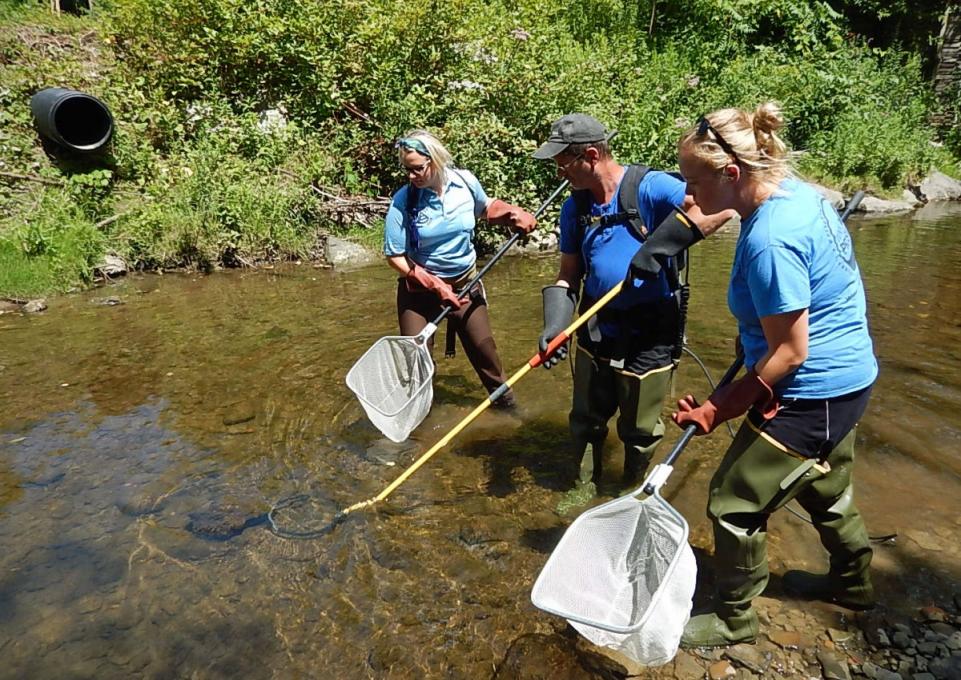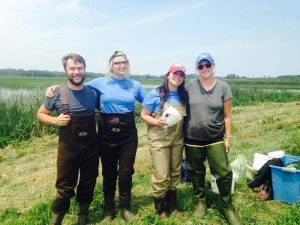
Since January 2014, Andrea Locke has met more Western New Yorkers than many long-time residents. Locke, coordinator of WNY PRISM (Partnership for Regional Invasive Species Management), says that’s because the program is first and foremost designed to be a partnership organization. Since she arrived at Buffalo State to head PRISM, Locke has established working partnerships with many local organizations, government agencies, and individuals.
“We have about 45 primary and collaborating partners,” said Locke, “but there are probably more than 200, when you include all the different levels of involvement. Some primary partners sit on our committees and working groups, while others are part of the statewide PRISM network. Collaborating partners work with us on grants and programming and provide us with important regional information. Many others have come to meetings, requested information, or volunteered.”
 PRISM is hosted by the Great Lakes Center and housed at its field station; it is funded by the Environmental Protection Fund through a contract with the New York State Department of Conservation.
PRISM is hosted by the Great Lakes Center and housed at its field station; it is funded by the Environmental Protection Fund through a contract with the New York State Department of Conservation.
PRISM’s mission is to “proactively identify, evaluate, and address invasive species priorities in Western New York.” Its achievement, under Locke’s leadership, has been to develop a multi-pronged strategy toward that mission and tools to turn strategies into action.
For example, Locke and her staff of seasonal assistants and volunteers provided boots-in-the-mud help last summer. “We helped to remove invasive plant species like Japanese knotweed and phragmites at sites including Tifft Nature Preserve and Jamestown Audubon Society,” said Locke.
Last season’s education efforts ranged from tabletop presentations at fairs, farmers markets, and festivals to a website that provides brochures, a map to identify the spread of invasives, and plenty of pictures to help partners and the public recognize an invasive species when they see one. “Launching the website was one of our main accomplishments this year,” said Locke.
The WNY PRISM team helped lake property owners’ associations train boaters to “clean, drain, and dry” their boats to avoid spreading aquatic invasive species from one body of water to another. “We are working to establish an early-detection system so we can identify an aquatic invasive species and remove it before it becomes established,” said Locke.
One problem with invasive species of plants, animals, and insects is that they can overwhelm native species, which in turn undermines the health of entire ecological systems. “We are really encouraged by the collaboration of our partners,” said Locke. “Perhaps most important are the many individuals who volunteer their time to safeguard Western New York’s native natural identity.”
